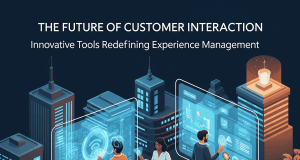Email marketing has long been a cornerstone of digital marketing strategies. With the constant evolution of technology, consumer behavior, and data privacy regulations, it is essential for marketers to adapt and innovate. As businesses approach 2024, several key trends in email marketing software are emerging, shaping how organizations engage with their audiences. Here are some of the most significant trends you can’t ignore.
1. Personalization and Segmentation
Hyper-Personalized Campaigns
Today’s consumers expect tailored experiences. Email marketing software is increasingly incorporating advanced personalization features, allowing marketers to segment their lists based on various criteria—such as demographics, past behavior, and engagement levels. This hyper-personalization ensures that the right message reaches the right person at the right time, significantly improving open and conversion rates.
Dynamic Content
Dynamic content capabilities allow marketers to change specific content in an email based on the recipient’s characteristics or past interactions. This can include personalized product recommendations, localized offers, or even adjusting the email’s layout. By leveraging dynamic content, brands can increase engagement and make recipients feel valued.
2. Automation and AI Integration
Smart Automation
Automation tools are becoming increasingly sophisticated, enabling marketers to set up complex workflows that trigger based on user behavior, interactions, or other predefined criteria. For instance, if a customer abandons their cart, an automated email can be sent to remind them to complete the purchase.
AI-Powered Insights
Artificial intelligence is transforming email marketing by providing actionable insights and predictive analytics. Using machine learning algorithms, marketers can analyze data to predict consumer behavior, optimize send times, and refine targeting strategies. This data-driven approach allows for continuous improvement and higher ROI.
3. Mobile Optimization
Responsive Design
With the growing reliance on mobile devices, ensuring emails are mobile-optimized is no longer optional. Email marketing software is now prioritizing responsive design, enabling emails to be easily readable and visually appealing across all devices. Marketers must ensure that their emails load quickly and display correctly on smartphones, tablets, and desktops.
App-like Experiences
Modern email design increasingly mirrors app-like interfaces, providing interactive features such as carousels, buttons, and forms directly within the email. This enhances user experience and encourages deeper engagement, blurring the lines between email and web applications.
4. Privacy and Compliance
Increased Focus on Data Privacy
As consumers become more aware of their data privacy rights, email marketers must navigate the complexities of regulations such as GDPR, CCPA, and others. Email marketing software is evolving to offer features that enhance compliance, such as consent management tools and data management capabilities to help organizations track user consent and preferences.
Transparent Data Practices
Marketers are also focusing on building trust with their audiences by being transparent about data usage. Sharing how data is collected, stored, and used in marketing efforts can foster trust and lead to better customer relationships.
5. Integration with Other Platforms
Unified Marketing Strategies
The trend toward integrated marketing efforts continues to grow. Modern email marketing software integrates seamlessly with other platforms, such as CRM systems, social media, and e-commerce tools. This unified approach enables marketers to craft consistent messages across channels and leverage data from multiple sources to inform their strategies.
API-First Solutions
API-first email marketing solutions allow businesses to customize their tech stack, integrating email functionality directly into their existing systems, whether for e-commerce, customer service, or other operations. This flexibility is crucial in today’s fast-paced digital environment.
6. Enhanced Analytics and Reporting
Data-Driven Decision Making
As competition intensifies, the demand for comprehensive analytics becomes critical. The future of email marketing involves more robust analytics and reporting capabilities, enabling marketers to track key performance metrics such as open rates, click-through rates, and conversions. This data allows for informed decision-making and the iteration of strategies over time.
A/B Testing Made Easier
Advanced A/B testing features can help marketers experiment with various elements of their emails—subject lines, content, and design—to find what resonates with their audience. As the tools become more sophisticated, marketers can run tests more efficiently and implement changes that drive results.
Conclusion
The future of email marketing is bright, filled with innovative software trends that can help marketers enhance their strategies and engage consumers effectively. By embracing personalization, automation, privacy concerns, and data-driven insights, businesses can not only stay ahead of the competition but also foster long-lasting relationships with their audiences. The key lies in leveraging these trends while remaining adaptable and responsive to the ever-evolving digital landscape. Email marketing will continue to be a valuable tool for businesses that prioritize innovation and consumer engagement.









